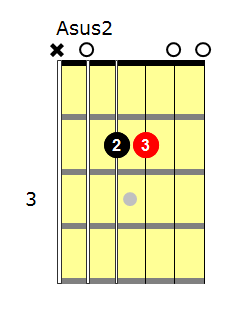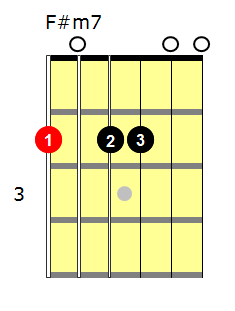It’s day three already and it’s time to learn another chord. This one follows on nicely from the Asus2 chord you learnt in yesterday’s lesson.
Today I’m showing you a different way to play a F#m7 chord. This sounds great on an acoustic, and also works well on an electric guitar.
I’ve put the two chords side by side so you can see the similarities between them. Both chords share similar notes – I’ll spare you the boring chord theory stuff here!
There’s a lot of songs that go from an A to a F#m chord and when I play those songs, I like to use these chords together.
Until I learnt this F#m7 chord, the only way I knew to play it was as a barre chord on the second fret.
Barre chords don’t sound so great on an acoustic, particularly when you’re playing mainly open chords in the song.
So, if you’re playing in the key of A, you should be able to play all the chords as open chords now that you know this different way to play F#m7.
But Wait, There’s More…
Like some of the other chords you’ve learnt, this F#m7 shape can me moved up the fretboard to create some other cool sounding chords.
If you move it up to the 5th fret, it’s an Am7 (with an added 9th). This is a good substitution for a boring Am chord.
Move it up another two frets to the 7th fret and it’s a Bm7.
For both the Am7 and Bm7 the addition of the top two open strings makes the chord sound different to the standard chord sound.
In the video I show you how I use these chords in some songs.
Hope you’ve enjoyed today’s lesson. See you tomorrow.

